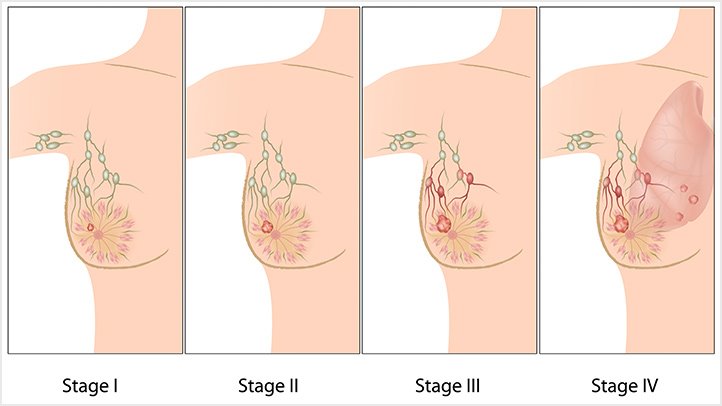
Will Breast Implant Cause Cancer?
Common misconception
Breast Implant-Associated Anaplastic Large Cell Lymphoma (BIA-ALCL) is often misunderstood to be breast cancer. This is not true. BIA-ALCL is a type of non-Hodgkin’s lymphoma, which refers to an extremely rare form of malignancy of the immune system. This is a type of cancer of the cells in the immune system.

Brief History
BIA-ALCL has a rather short history. It was first identified by FDA in 2011. At that time, it was impossible to determine risk factors due to the limited cases of ALCL in various individuals, ranging from cis- and trans-gender women and men with breast implants.
Later in 2016, the World Health Organization designated BIA-ALCL as a T-cell lymphoma that may develop after a patient goes for breast implants. Till date, it is difficult to reach a conclusion as to whether breast implants cause ALCL as there is limited accurate data in global breast implant sales and world-wide reporting. This is especially so since BIA-ALCL is based on voluntary reporting which can contain incomplete, untimely, unverified or biased data.
As of September 2017, FDA reported a case count increase from 359 to 414 medical device reports (MDRs) over the past year. A separate registry known as ‘Profile’ reported higher figures of approximately 500 cases of BIA-ALCL worldwide, with 16 verified deaths, five of which stemmed from the United States.
Research findings
The field of BIA-ALCL is still very new. According to a study in the Aesthetic Surgery Journal, the risk of dying from BIA-ALCL is extremely low. To put things into perspectives, the study compared the risk of traveling eight hours by car to that of getting breast implants. The former is 40 times riskier than the latter. In fact, some scientists are pushing to reclassify BIA-ALCL as a lymphoproliferative disorder instead of lymphoma, which suggests that a group of scientists believe it to be a reactive condition with a spectrum of progression that leads to cancer instead. More research and studies are being carried out actively.
Risks stemming from textured implants
It is tough to pinpoint the exact risks due to a lack of information about how many patients have received breast implants. Based on the limited reported statistics currently, BIA-ALCL is more likely to occur in women who opted for implants with a textured surface instead of a smooth one. This may be due to the textured implants’ rough surface which can irritate some patients, thereby leading to long-term inflammation. The inflammatory reactions to probable bacterial contamination can result in lymphoma. It may also be due to the textured surface trapping bacteria, which can trigger a chronic infection.
Current literature reported estimates that BIA-ALCL can develope in 1 in between 3,817 to 30,000 women with textured breast implants (Clemens et al, 2017; Loch-Wilkinson et al, 2017; De Boer et al, 2018).
Symptoms
A major symptom typically observed is persistent swelling, pain or lumps around the implant. There may also be breast asymmetry. BIA-ALCL is also most commonly observed in patients undergoing implant revision operations for late onset and persistent seroma (fluid collection around the implant). These symptoms can spring up anywhere between two to 28 years post-surgery, with a recorded median of eight years. If a woman sees no symptoms, there is no need to screen for BIA-ALCL or remove their implants.
Diagnosis
After exhibiting the aforementioned symptoms, the doctor may recommend an ultrasound scan to check if the swelling is due to fluid collection. If so, the fluid will be removed and sent to a laboratory for testing and analysis. Do note that mammograms are not useful in diagnosing BIA-ALCL. Instead, MRI or CT-scans are likely to be performed after confirming BIA-ALCL in the fluids collected.
Treatment
When detected early, it can typically be cured by removing the implant and the capsule of scar tissue around it through surgery. However, some women may require chemotherapy or radiotherapy for treatment. This is especially so if there is a solid lump as opposed to fluids. Both implants will usually be removed, even if only one breast is affected by BIA-ALCL. This is due to a small risk that it can develop in the opposite breast. There is a chance that BIA-ALCL will spread throughout the body. In a study of 32 patients with ALCL tied to breast implants, 90% had no signs of cancer after about three years.
The overall management of BIA-ALCL is multi-disciplinary. Patients are likely required to get referrals to a surgeon experienced with breast implants and a haematologist specialising in lymphoma.
Improvements to surgical approaches
In today’s age of advanced technology, breast augmentation’s surgical approaches are also constantly being refined and improved. In a bid to reduce the chances of infection and complications, doctors can use a no-touch technique to place smooth implants through an inch and a half wide incision under the breasts as opposed to through the nipple or armpit. In addition, the implants will be bathed in anti-biotic irrigation, poured into a sterile Keller Funnel, and placed into the breast with absolutely zero contact with human hands. This process helps in the reduction of contamination risk, which can in turn reduce the risk of BIA-ALCL.
Education and monitoring
It is crucial for all candidates thinking about having breast implants to educate themselves fully on all possible risks, including but not limited to BIA-ALCL. For existing patients with breast implants, there is no need to change the routine medical care and follow-up. Follow your doctor’s instructions on ways to monitor the health of your breasts and breast implants, as well as regular mammography screenings.
Conclusion
Breast implants are improving and becoming safer over time. However, being well-informed, exercising vigilance, and actively monitoring the health of your breasts are all crucial steps that one can take to be better prepared in the event of BIA-ALCL.
